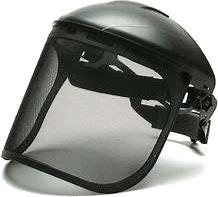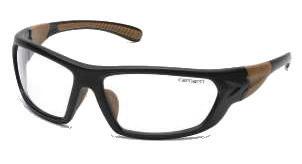
6 minute read
Employee Safety
from Interchange November 2021
by WYDOT
Winter weather cold stress
By Geoff McPherson-WYDOT Employee Safety
We all know how extreme the winter weather patterns can be in Wyoming. Planning early for the weather could lead to a decrease in injuries caused by exposure to freezing conditions. Employee Safety recommends early assessment of potential exposures and documentation in the applicable JSAs, along with safety briefings, significantly increase the safety of all employees. Cold Stress
Cold stress occurs by driving down the skin temperature, and eventually the internal body temperature. When the body is unable to warm itself, serious cold-related illnesses and injuries may occur, and permanent tissue damage and death may result.
Four factors contribute to cold stress: cold temperatures, high or cold wind, dampness and cold water. A cold environment forces the body to work harder to maintain its core temperature. Cold air, water and snow all draw heat from the body. So, while it is obvious that below freezing conditions, combined with inadequate clothing could bring about cold stress, it is important to understand that it can also be brought about by temperatures in the 50’s coupled with rain and/or wind. What are some physical signs of cold stress? Immersion/Trench Foot
Trench foot is an injury of the feet caused by prolonged exposure to wet and cold conditions. Symptoms of trench foot are reddening skin, tingling, pain, swelling, leg cramps, numbness and blisters.
First Aid • Remove wet shoes/boots and wet socks; • Dry the feet and avoid working on them; and • Keep affected feet elevated and avoid walking. Get medical attention.
Frostbite
Frostbite is caused by the freezing of the skin and tissues. Frostbite can cause permanent damage to the body, and in severe cases can lead to amputation. Frostbite typically affects the extremities, particularly the face, ears, fingers and toes. The symptoms of frostbite are reddening skin developing gray/white patches in the fingers, toes, nose, or ear lobes. Tingling, aching, a loss of feeling, firm/hard skin and blisters may occur in the affected areas.
First Aid • Protect the frostbitten area. Wrap loosely in a dry cloth and protect the area from contact until medical help arrives; • Do not rub the affected area, because rubbing causes damage to the skin and tissue; • Do not apply snow, water or break blisters; and • Do not try to re-warm the frostbitten area before getting medical help. Hypothermia
Hypothermia occurs when the normal body temperature (98.6°F) drops to less than 95°F. Hypothermia is most likely at very cold temperatures, but it can occur even at cool temperatures (above 40°F) if a person becomes chilled from rain, sweat, or immersion in cold water. Symptoms of hypothermia are: • Mild Hypothermia: Alert but Shivering; and • Moderate to Severe Hypothermia: shivering stops; confusion; slurred speech; heart rate/breathing slow; loss of consciousness; death.
First Aid • Call 911 immediately in an emergency; • To prevent further heat loss, move the worker to a warm place. Change to dry clothes and cover the body,including the head and neck, with blankets and with something to block the cold (i.e., tarp, garbage bag). Do not cover the face. • If medical help is more than 30 minutes away give warm, sweetened drinks, if alert. Apply heat packs to the armpits, sides of chest, neck and groin.
Preventing Cold Stress
Planning for work in cold weather is the most important defense in preventing cold stress. Wearing appropriate clothing and being aware of how your body is reacting to the cold are important to preventing cold stress. Avoiding alcohol, certain medications and smoking can also help to minimize the risk.
Protective Clothing
Wearing the right clothing is the most important way to avoid cold stress. The type of fabric also makes a difference. Cotton loses its insulation value when it becomes wet. Wool, on the other hand, retains its insulated qualities even when wet. Work Schedules
Employers should provide engineering controls
Engineering controls can be effective in reducing the risk of cold stress. For example, radiant heaters may be used to warm workplaces like outdoor security stations. If possible, employers should shield work areas from drafts or wind to reduce wind chill.
Employers should use engineering controls to protect workers from other winter weather related hazards, for example, aerial lifts or ladders can be used for safely applying de-icing materials to roofs, to protect workers from the hazard of falling through sky lights.
Employers should implement safe work practices
Providing workers with the proper tools and equipment to do their jobs;
Developing work plans that identify potential hazards and the safety measures that will be used to protect workers;
Limiting the amount of time spent outdoors on extremely cold days;
Providing warm areas for use during break periods;
Try to work in pairs to keep an eye on each other and watch for signs of cold stress. Victims of hypothermia may not recognize symptoms;
Encourage employees to drink plenty of liquids, avoiding caffeine and alcohol. It is easy to become dehydrated in cold weather;
Monitoring the weather conditions during a winter storm, having a reliable means of communicating with workers and being able to stop work or evacuate when necessary;
Acclimatizing new workers and those returning after time away from work by gradually increasing their workload, and allowing more frequent breaks in warm areas, as they build up a tolerance for working in the cold environment;
Having a means of communicating with workers, especially in remote areas;
Knowing how the community warns the public about severe weather: outdoor sirens, radio and television;
The National Oceanic and Atmospheric Administration (NOAA) provides multiple ways to stay informed about winter storms. If you are notified of a winter storm watch, advisory or warning, follow instructions from your local authorities; and
Avoiding exposure to extremely cold temperatures when possible. However, if due to the needs of the Wyoming public, WYDOT employees must work in extreme temperatures refer to the cold stress graph below developed by the American Council of Governmental Industrial Hygienist (ACGIH) for employees, supervisors and managers. n
When to use eye and face protection
By Jerry Fritz, Employee Safety, District 5
Recently, an employee was working under a raised mower and sustained a significant injury to one of his eyes. The employee had taken precautions to wear eye protection; however, this injury might have been avoided if both the proper eye and face protection was used for the task.
Personal Policy Number 8-17’s purpose is “To ensure Wyoming Department of Transportation (WYDOT) employees facing potentially hazardous working conditions use appropriate face and/or eye protection to safely fulfill their duties and reduce possible injury”.
When to use eye protection and face protection?
OSHA 1910.133 (a) (1) The employer shall ensure that each affected employee uses appropriate eye or face protection when exposed to eye or face hazards from flying particles, molten metal, liquid chemicals, acids or caustic liquids, chemical gases or vapors, or potentially injurious light radiation.
When do you need to wear a face shield?
Face shields protect against potential splashes or sprays of hazardous liquids. When worn for protection against UV, must be specifically designed to protect the face and eyes from hazardous radiation. When used for chemical protection or UV protection, must comply with ANSI standard Z87.1.
How can you prevent a similar injury?
Review the JSA’s to see recommended eye/face protection for the task. The following face and eye protection items are available from the Procurement Program. In addition, WYDOT will provide employees one pair of safety prescription eye wear, up to $250, every 24 months through our contacted vendor (with supervisory approval). n










